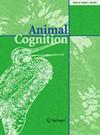乌鸦意识的维度
IF 2.1
2区 生物学
Q3 BEHAVIORAL SCIENCES
引用次数: 0
摘要
鸦科动物长期以来一直是公众和科学关注的对象,特别是在动物心理研究方面。使用Birch等人(2020)的动物意识5维框架,我们询问乌鸦是什么样子的,并提出了一个推测性但经验丰富的答案。我们继续建议未来研究乌鸦意识的方向,以及它如何为伦理治疗和动物福利立法提供信息。本文章由计算机程序翻译,如有差异,请以英文原文为准。
Dimensions of corvid consciousness
Corvids have long been a target of public fascination and of scientific attention, particularly in the study of animal minds. Using Birch et al.’s (2020) 5-dimensional framework for animal consciousness we ask what it is like to be a corvid and propose a speculative but empirically informed answer. We go on to suggest future directions for research on corvid consciousness and how it can inform ethical treatment and animal welfare legislation.
求助全文
通过发布文献求助,成功后即可免费获取论文全文。
去求助
来源期刊

Animal Cognition
生物-动物学
CiteScore
4.50
自引率
18.50%
发文量
125
审稿时长
4-8 weeks
期刊介绍:
Animal Cognition is an interdisciplinary journal offering current research from many disciplines (ethology, behavioral ecology, animal behavior and learning, cognitive sciences, comparative psychology and evolutionary psychology) on all aspects of animal (and human) cognition in an evolutionary framework.
Animal Cognition publishes original empirical and theoretical work, reviews, methods papers, short communications and correspondence on the mechanisms and evolution of biologically rooted cognitive-intellectual structures.
The journal explores animal time perception and use; causality detection; innate reaction patterns and innate bases of learning; numerical competence and frequency expectancies; symbol use; communication; problem solving, animal thinking and use of tools, and the modularity of the mind.
 求助内容:
求助内容: 应助结果提醒方式:
应助结果提醒方式:


